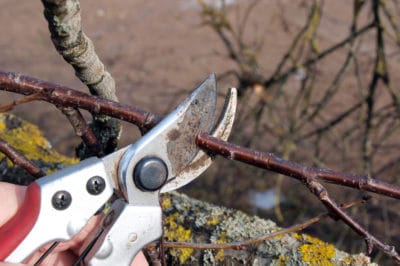Reasons for Trimming Weeping Cherry Trees
While these trees do not generally require much pruning, there are a several reasons for trimming this tree.
- Because the branches of this variety are prone to touching the ground, it may be desirable to trim them to create space under the tree for mowing grass or tending other vegetation planted there.
- Dead and diseased branches should be removed whenever they are discovered. Cherry trees, including this variety, are especially prone to a number of fungal diseases, and removing diseased branches can help stop the spread of an infection.
- Weeping cherry trees can grow to a height of 30 feet (9.2 meters), and you may want to limit the height by pruning. Pruning is also used to manage the shape of the tree.
When and How You Should Prune a Weeping Cherry
Prune a weeping cherry tree when it is dormant and without leaves or flowers. The best time for pruning is in early spring before blossoms appear.
Start by checking if your tree is grafted or natural. A grafted tree has a conspicuous knot near the base of the tree where the upper part of the tree has been attached to the root stock. Natural trees do not have this demarcation.
If the tree has not been grafted, do not remove upright stems because these will eventually arch, giving the tree its weeping character. If the tree is grafted, remove upright stems. Grafted trees also often have a mass of tight branches at their center, requiring more trimming than natural trees.
Start by cutting out dead and damaged branches. Cut the branch out with a handsaw or large garden shear at the base of the branch where it attaches to the trunk and do not leave a stub.
Next, cut out branches that cross one another and trim branches reaching all the way to the ground so they are at least 6 inches (15cm) above the ground. You can trim them even more if you need space below the tree for mowing grass or tending other vegetation.
Using heading cuts to keep the tree at a lower height, cutting branches back by up to two-thirds their length. Using thinning cuts to remove vegetation in the interior of the tree and allow more light and air circulation inside the canopy.
